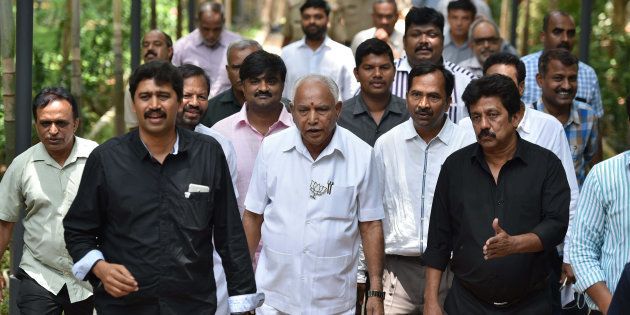
B.S. Yeddyurappa and B. Sriramulu's return to the Bharatiya Janata Party has led the saffron party's surge in Karnataka, despite the incumbent Indian National Congress marginally increasing its vote share in 2018, a preliminary comparison of party vote share over three successive elections shows. The Janata Dal (Secular), meanwhile, largely emerged with its seat share and vote share intact.
These numbers complicate the existing narratives of the presumably increasing popularity of communal polarisation amongst voters, the Modi effect, the impact of the supposed tie-up backroom deal between the BJP and the JD(S), and underscores an established trend where, as the party of default amongst a diverse swathe of voters, the Congress tends to win disproportionately fewer seats despite garnering a sizeable share of votes.
For the BJP, going strictly by the numbers, the return of Yeddyurappa and Sriramulu appears far more significant than the effect of Prime Minister Narendra Modi's many rallies through the state. The party's ability to target geographically focussed groups voters, which translate into seats, could also explain the paradox of seeming broad disaffection with Central government policies, yet an enviable record of winning state elections.
The JD(S)'s steady vote share over 15 years points to the party's rock-solid support amongst a determined section of supporters, and suggests that any rumoured JD(S)-BJP deal did not really eat into the Congress's share this time around.
For the Congress, steady over-all vote share, but a sharp reduction in seats suggests that the party's 'everything-for-everyone' approach to politics win diffused support, but doesn't necessarily translate into seats.
The Numbers
Numbers for the preceding elections are sourced from the ECI's statistical indices for 2008 and 2013. The 2018 numbers, drawn from the Election Commission of India's website at 2:30 PM today, will fluctuate marginally through the day.
In 2008, the BJP won 110 seats by capturing 33.86% of the popular vote. The Congress won only 80 seats despite a capturing a slightly larger share of the vote, 34.76%.
In 2013, a 1.83 percentage point increase in vote share for the Congress resulted in 42 more seats, and solid majority that lasted five years. Meanwhile, in the opposition, B.S. Yeddyurappa and B. Sriramlu broke with the BJP to form their own parties, and together captured 12.38% of the vote share, almost entirely at the cost of the BJP, whose vote share fell to 19.89%.
Yet, taken together, the BJP and the formations of their former leaders still managed 32.27% of the vote share, or about 1.59% down from their 2008 collective total.
Now in 2018, with Yeddyurappa and Sriramalu back in the BJP, the party has gained 36.7% of the vote share, a swing 2.6% increase over their vote in 2008 - when they last formed the government. The swing seems to have come at the expense of the JD(S), and smaller party formations.